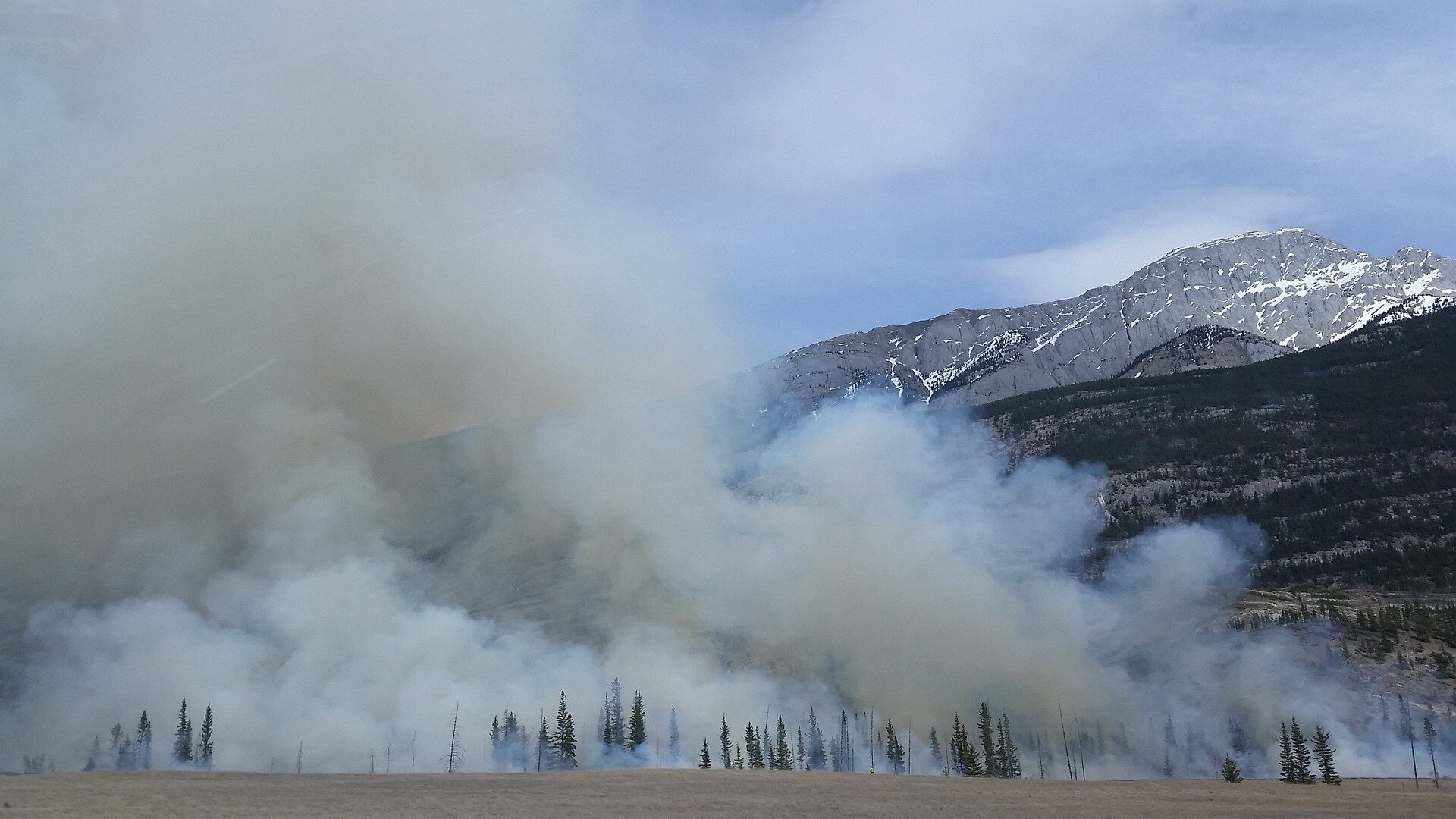
Image credit: Pixabay/CC0 Public Domain
Spring and summer have a new normal in the United States: days and even weeks in which the acrid smoke from wildfires forces us indoors. In the worst cases, not even closed shutters can protect us from the consequences – burning eyes, runny noses and burning lungs.
As the Earth’s climate warms, wildfires are devastating larger swaths of land each year. As Bloomberg Opinion columnist Mark Gongloff explains, fire seasons in some parts of the U.S. are now a month longer than they were in 1973. These more intense, longer wildfire seasons are pushing this particular type of pollution into parts of the country that aren’t used to orange skies and unbreathable air.
This poses a threat to our health – not only when the smoke is thick, but also for years afterward. Researchers are increasingly realizing that wildfire smoke can cause health problems wherever it blows.
Many of the short-term problems associated with exposure to wildfire smoke are now well understood.
The worst of all, of course, is death. A recent working paper from the National Bureau of Economic Research estimates that by 2050, the United States will see nearly 28,000 more deaths per year due to climate-related increases in wildfire smoke—76 percent more than the average annual death toll between 2011 and 2020.
More and more people are suffering from milder but still serious effects, such as worsening asthma and debilitating headaches. When smoke from the Canadian wildfires blew thousands of miles across much of the United States last summer, it led to a 17 percent increase in asthma-related emergency room visits, according to the Centers for Disease Control and Prevention.
Less obvious health problems have also come to light recently. Several studies have found a link between wildfire smoke and pregnancy complications, including preeclampsia (a form of dangerously high blood pressure) and premature birth.
Deciphering the long-term health effects, however, has been more difficult. For much of the year, we are not exposed to wildfire smoke, and then it can suddenly spike. “How the human body deals with it and what the long-term consequences are is still very little understood and largely unknown,” says Joan Casey, an environmental epidemiologist at the University of Washington.
And of course, we are exposed to other forms of air pollution that affect our health. Distinguishing the effects of wildfire smoke from those of other pollutants is challenging. One problem is that most air quality monitors are located in cities, creating a frustrating information gap for researchers.
“We have huge rural areas where we don’t really know what the air quality is like – and that’s where people are often most exposed to wildfires,” Casey says.
Ideally, researchers trying to decipher the health effects of wildfire smoke would like to find out how often someone has been exposed to the smallest particles, called PM.2.5how intense the exposure was and how many days it lasted. And then they wanted to observe them over a longer period of time and compare them with a similar group that had the advantage of a smoke-free environment.
But in the real world, nothing is so clear-cut. Wildfire fighters, for example, are an obvious choice, but what’s less obvious is who they should be compared to, says Marshall Burke, deputy director of Stanford University’s Center for Food Security and the Environment.
They could be compared to regular firefighters, but the two groups may also make lifestyle choices – for example, taking more risks or spending more time outdoors – that could impact their long-term health.
Researchers can try to account for these differences, but “that’s really hard to do in a convincing way,” Burke says. Another limitation is that wildfire fighters, who are predominantly white and male, do not represent the U.S. population as a whole.
Still, researchers are finding creative ways to separate the effects of wildfire smoke from those of other pollutants. For example, a recent study led by Casey combined geographic information with a decade’s worth of insurance data from about 1.2 million Californians over age 60.
This allowed the researchers to estimate how much of their PM2.5 The greatest exposure came from wildfire smoke compared to other forms of pollution. They found that inhaling wildfire smoke increased the risk of dementia – a risk that is exacerbated by the poverty level.
The best information would come from monitoring people exposed to wildfire smoke over a long period of time. An ambitious project in Hawaii is studying people living near the wildfires that devastated parts of Maui in 2023. This type of prospective study will take time to provide answers and faces a challenge: It needs long-term, sustainable funding to keep track of people for decades.
“All we’ve found in our work is that there is no safe level of exposure. The more you get, the worse the consequences are,” says Burke. This is consistent with other work on air pollution in general.
Wearing a high-quality mask can significantly reduce exposure outdoors, and investing in HEPA filters for schools, workplaces, and homes may be the best way to clear your lungs of smoke.
2024 Bloomberg LP. Distributed by Tribune Content Agency, LLC.
Quote: Wildfire smoke can cause damage in several ways (28 August 2024), accessed 28 August 2024 from https://phys.org/news/2024-08-wildfire-ways.html
This document is subject to copyright. Except for the purposes of private study or research, no part of it may be reproduced without written permission. The contents are for information purposes only.

